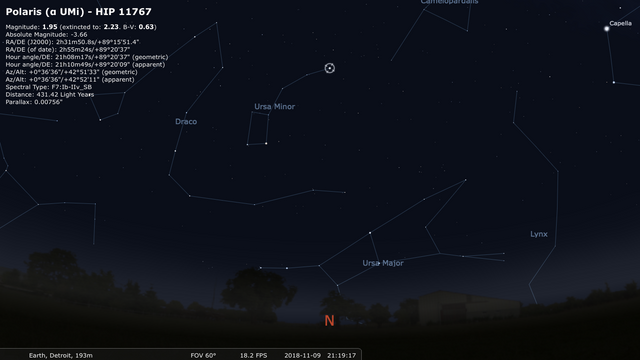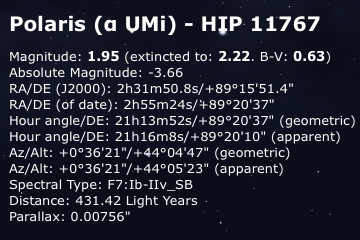Concepts in Astronomy #17. Finding Planets, Stars and Constellations: Polaris
Finding Stars and Constellations: Polaris
Polaris is our current North Star. Its proper name is Alpha Ursae Minoris which means, "the brightest star in the constellation of the Little Bear". This star is located 432 light years from Earth, its radius is 45 times that of our Sun, and it is 2500 times as bright.
Finding Polaris is not so difficult because currently it is considered the North Star. One has to look North into the celestial sphere and look for an altitude similar to the latitude where one on located in Earth's globe. For example, if you live in Detroit, Michigan, look for an altitude of 42 degrees in the North direction and you will find Polaris.Its position will not change significantly during the night, which makes it even easier to find.
Previous Posts
Concepts in Astronomy #1. Introduction
Concepts in Astronomy #2. The Ecliptic
Concepts in Astronomy #3. The Celestial Equator
Concepts in Astronomy #4. Right Ascension
Concepts in Astronomy #5. Declination
Concepts in Astronomy #6. The Celestial Sphere
Concepts in Astronomy #7. Azimuth
Concepts in Astronomy #8. Altitude
Concepts in Astronomy #9. The Equatorial Coordinate System
Concepts in Astronomy #10. The Topocentric Coordinate System
Concepts in Astronomy #11. Equinox
Concepts in Astronomy #12. Solstice
Concepts in Astronomy #13. Rotation Period
Concepts in Astronomy #14. Orbital Period
Concepts in Astronomy #15. Axial Precession
Concepts in Astronomy #16. Axial Tilt


